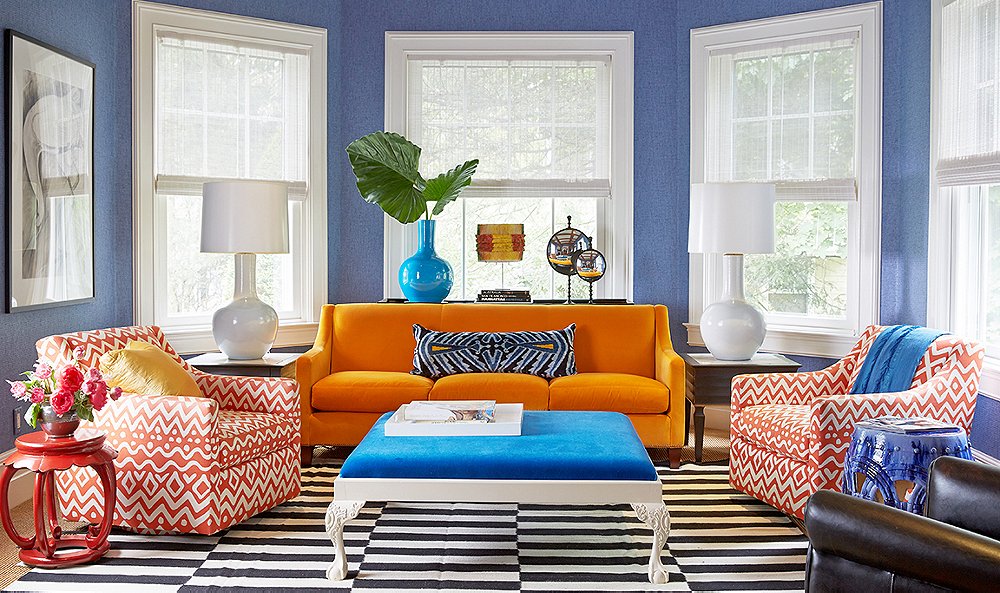Complementary Colors: The craft of balancing Opposites in Interior Design
When it comes to interior design, reaching a balanced and aesthetically satisfying space is a aim that many residents and designers aim to. One of the most intriguing techniques in the world of interior design is the use of contrasting colors. These colors, situated contrasting each other on the color spectrum, have an inherent potential to create a striking visual influence when combined. In this write-up, we examine the intriguing realm of complementary colors and how to become skilled in the craft of harmonizing opposites in your home decor.
Understanding Contrasting Colors
Complementary colors are pairs of colors that, when placed next to each other, generate a noticeable discrepancy and dynamic effect. They intensify each other's power and establish a perception of visual energy that can elevate the aesthetics of any interior space. The main complementary color pairs consist of blue and orange, red and green, and yellow and purple. Harnessing the capability of these color combinations can alter your interior design from common to extraordinary. Bedroom color
Creating a Energetic Color Palette
Incorporating contrasting colors into your home decor requires more than just splashing different colors onto the walls. A well-executed color palette takes into account the balance, equilibrium, and entire composition of the colors used. Start by picking a primary color and then use its complementary color as an accent. For instance, if your main color is blue, contemplate adding touches of orange to establish a animated and captivating atmosphere.
The Play of Cozy and Cool Tones
Opposite colors often consist of a toasty tone and a cool tone. This play between toasty and chilly tones creates a energetic and aesthetically pleasing difference. Warm tones, such as reds and oranges, elicit a impression of enthusiasm and vibrancy. On the other hand, refreshing tones like blues and greens convey a relaxing and tranquil impact. When balanced harmoniously, this interplay of toasty and refreshing tones can create a engaging ambiance in your living area.
Accessories & Furniture
Incorporating complementary colors doesn't halt at the walls. Extend this color harmony to your pieces of furniture and accessories for a integrated look. Contemplate picking a key piece of home furniture in one of the contrasting colors and then accentuating it with accessories like throw pillows, rugs, and artwork in its complementary counterpart. This approach establishes a visual connection throughout the room, leading to a harmonious and carefully designed design.
Achieving Stability
While the use of complementary colors can infuse a room with vibrancy, achieving a feeling of balance is vital. Too much of one color can overwhelm the space and disrupt the desired harmony. To prevent this, employ the 60-30-10 rule. Allocate 60% of the room to the primary color, 30% to the secondary color, and 10% to the opposite accent color. This rule guarantees that the colors work together in harmony, creating an atmosphere that is pleasing to the eye and soothing.
Lighting Considerations
Lighting plays a pivotal role in home decor, and it becomes even more notable when working with opposite colors. Different lighting situations can modify the appearance of colors, so it's crucial to test your selected color scheme under various lighting settings. Natural light, warm artificial light, and cool fluorescent light can all influence how the colors interact. By evaluating these factors, you can refine your color choices to achieve the desired result, no matter the time of day.
To see more interior design tips see Michigan Interior Design
Case Studies: Bringing Theory to Life
To truly grasp the influence of opposite colors, let's explore a few case studies where this method has been masterfully executed:
Case Study: Contemporary Living Room
In a modern living room heavy with shades of neutral gray (60%), a vibrant pop of deep orange (30%) adorns the room through accent chairs, cushions, and a statement artwork. This clever use of opposite colors brings life to the space without overwhelming its sophisticated vibe.
Case Study: Serene Bedroom Retreat
A tranquil bedroom retreat is brought to life by pairing soft, muted shades of soft green (60%) with subtle touches of orange-pink (30%). The soft interplay of these opposite colors infuses the room with a sense of serenity and tranquility, creating an oasis of relaxation.

Conclusion
The craft of aligning opposites through opposite colors is a powerful method in the realm of home decor. By understanding the dynamics of heated and chilly tones, creating a balanced color palette, and strategically incorporating these colors into your furniture and accessories, you can heighten your living spaces to new heights of aesthetic attractiveness and visual delight. Remember, achieving balance and considering lighting are key components of effective implementation. So go ahead, embrace the magic of opposite colors, and transform your home into a work of art of design.
UNDER MAINTENANCE